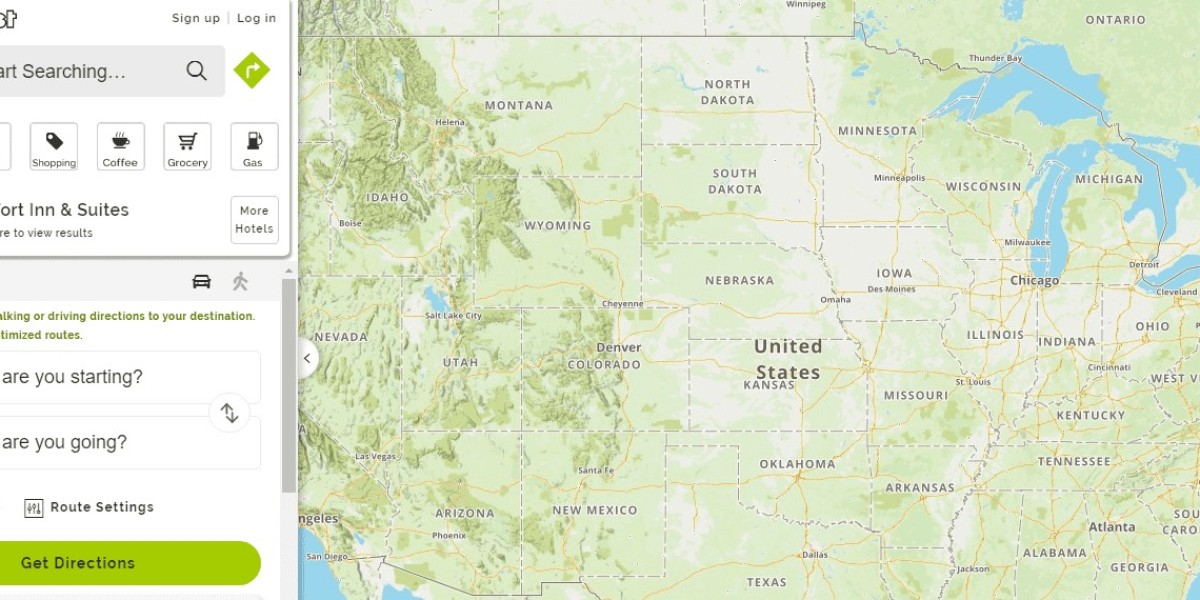In an age where Google Maps and Apple Maps reign supreme, it's easy to forget the digital pioneers who once set the stage for modern navigation tools. MapQuest, the once-unstoppable force in online mapping, quietly still exists, albeit in a much more subdued way. It’s a testament to the resilience of a platform that was once synonymous with directions and route planning. But how did MapQuest go from being the dominant mapping service to a name that only the most dedicated users still remember? Let's dive into the story of this digital veteran.
The Birth of a Digital Pioneer
MapQuest was born in 1996—an era when dial-up internet connections were the norm and Google was still in its infancy. The service was revolutionary for its time. Before MapQuest, printed maps were the go-to for drivers, and any trip longer than a couple of miles required careful pre-planning. MapQuest’s online maps and driving directions were a game changer. You could simply input an address and receive a detailed, printable map with step-by-step directions. For anyone who remembers traveling with a stack of printed directions, MapQuest was the breakthrough we didn’t know we needed.
The Rise to Popularity
By the early 2000s, MapQuest had become the digital mapping service of choice, dominating the online navigation space. It had the market to itself for a few years, and its success led to major acquisitions, including its purchase by AOL in 1999 for a hefty $1.1 billion. During this time, MapQuest wasn’t just offering directions—it was offering convenience. The idea that you could plan a trip online without needing to interact with a physical map was almost like magic.
However, as is often the case in the tech world, the next big thing wasn’t far behind.
The Challenge from Google Maps
Enter Google Maps in 2005. Powered by Google’s advanced technology, this new service didn’t just offer directions—it offered a much more interactive experience. With features like zoomable maps, satellite imagery, and street view, it quickly won over millions of users. People could now explore a map, see traffic conditions in real-time, and even view street-level imagery. As Google Maps evolved, it began integrating features that made it indispensable for smartphone users, further pushing MapQuest into obscurity.
At the same time, the rise of smartphones meant that users no longer had to pre-plan their trips or print out directions—they could rely on built-in GPS systems, often powered by Google Maps or Apple Maps, for real-time turn-by-turn navigation.
MapQuest’s Adaptation and Shift in Focus
So, how did MapQuest adapt to the shifting landscape? For a while, it tried to keep up. It added new features, such as customizable routes and traffic alerts. In 2007, it even launched its own mobile app, but by then, it was already a step behind the competition.
MapQuest’s identity became less about being the go-to navigation service and more about providing niche services, like fuel price comparisons and driving directions for specific industries. It also offered users the ability to customize their routes in ways that Google Maps couldn’t. While MapQuest’s market share continued to dwindle, it found a home among users who appreciated its simplicity and its non-intrusive design.
In 2015, MapQuest changed hands once more when Verizon Media (formerly AOL) sold it to System1, a digital marketing company. This move solidified MapQuest’s shift from being a leader in digital mapping to an under-the-radar service with a loyal, niche audience.
MapQuest Today: Quiet but Resilient
Despite the dominance of Google and Apple Maps, MapQuest still serves a small but dedicated user base. The service now focuses more on providing map-based tools for businesses, offering features like fleet tracking, location data analytics, and business route optimization. It also maintains a website for users who prefer to plan their trips using the classic MapQuest interface, rather than relying on mobile apps.
One of MapQuest’s more endearing qualities today is its retro feel. There’s something nostalgic about entering an address and seeing the simple, no-nonsense interface that once defined online mapping. In a world of polished, app-driven experiences, MapQuest feels like a throwback to the early days of the internet—a time when things felt slower but simpler.
MapQuest’s Cultural Legacy
MapQuest’s cultural influence remains significant, especially in online history. It wasn’t just a mapping tool—it was a symbol of the early internet era. In fact, the term “MapQuesting” was once synonymous with finding directions online, and even now, the company’s name is occasionally used in pop culture references. For many, the idea of printing out directions before embarking on a road trip is as much a part of digital nostalgia as early blogging or the rise of social media.
Looking Forward: A Niche But Important Role
While MapQuest may never reclaim its position as the dominant mapping service, it still occupies a unique niche. There will always be users who appreciate its straightforward approach to navigation and its focus on non-invasive, non-data-heavy services. As the internet continues to evolve, MapQuest may continue to serve as a reminder of how far we’ve come—and how even the most iconic digital platforms can fade into the background, only to pop up when least expected.
So, the next time you're planning a road trip, perhaps give MapQuest a quick visit. You may find that the old-school charm and simplicity are just what you need for a digital detox. After all, sometimes less really is more.









